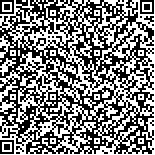Archive > Volume 46 Issue 11 > 2020,46(11):1485-1494. DOI:10.7519/j.issn.1000-0526.2020.11.009 Prev Next
Verification of ECMWF 10 m Wind Forecast for Coastal Zhejiang Province
- Article
- Figures
- Metrics
- Preview PDF
- Reference
- Related
- Cited by
- Materials
Abstract:
Using the observation data from Zhejiang coastal stations, the ECMWF 10 m wind forecast from 2015 to 2018 was verified and evaluated. The results are as follows. The forecast error is closely related to the offshore distance. The farther the station is from the coastline, the higher the consistency is. For farshore stations, the predicted wind speeds are lower than the observed values and the wind directions have counterclockwise deviations. However, for nearshore stations, the results are opposite. With forecast lead time extending, the correlation coefficient of wind speed gradually decreases, while the rootmeansquare error of wind speed and wind direction gradually increases, and this change is more pronounced for far offshore stations. Further analysis on buoy stations indicates that the forecasts of NW, N and NE winds prevailing in winter have significant systematic deviations. The predicted wind speeds are weaker for strong winds, and wind directions have clockwise deviations for light winds. The forecast dispersions of wind speed and wind direction are NW>N>NE. The prediction errors of S and SW winds prevailing in summer are relatively smaller than that of the winter NW and N wind directions. Regarding the three typical gale systems, the cold air gales obtain the best forecast outcome, with the accuracy reaching 97% in 12 h lead time and over 70% in 96 h lead time. The accuracy of tropical cyclone wind forecast declines most significantly with lead time. The accuracy is 85% in 36 h lead time, but decreases sharply to less than 50% beyond 96 h. For low pressures or reverse trough systems, the forecast accuracy remains less than 60% within 144 h lead time. The maximum wind predictions and observations at buoy stations during cold air and tropical cyclone systems are basically in line with the linear distribution. The correlation coefficient for the cold air system can pass the 0.05 significance test within 144 h, while, for tropical cyclones, it can pass the 0.05 significance test only within 48 h. The linear regression method is used to correct the maximum wind speed forecast at buoy stations for cold air systems, and the independent sample tests prove that this method is effective in reducing prediction errors.
Keywords:
Project Supported:
Clc Number:


Mobile website









